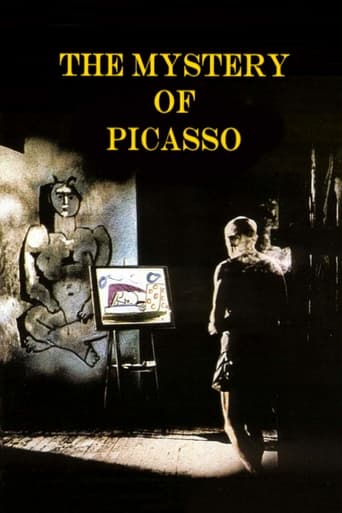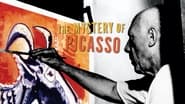acingst
This is a documentary film of Pablo Picasso. Pablo Picasso is painter. He is so popular in the world. His life is from October 25, 1881 until April 8, 1973. He is Spanish. The most typical picture of Picasso is the Guernica. Guernica's theme is anti-war. Although Picasso is such a person, in fact, there is a rare film that motif is later years of Picasso. This film is made by Henri-Georges Clouzot director. This film is documentary. At first, white screen is reflected. Then, the line is extended to the white screen. When the audience is looking at the line, it gradually becomes a picture of something. And the line is applied. Then, the first picture is changing to another picture. The audience seems to like watching the animated film. After that, Picasso appears in the screen. Then the film reflects the process of production of the painting by Picasso. This film is a simple story Picasso draws a picture. However, the audience is pulled into the film. I cannot stop watching the film until last. Perhaps you would see this film in mysterious ways.
butterfinger
Henri-Georges Clouzot's The Mystery of Picasso starts by announcing that we will have the pleasure of entering the mind of Pablo Picasso, seeing how he gets his creative inspiration; the film promises us that the only way to do this is to watch Picasso's hand. Picasso paints on paper that the ink bleeds through, putting the camera on the other side of Picasso's canvas and watching the a reversed version painting appear in a seemingly magical way. It becomes clear early on that Clouzot is not wholeheartedly trying to show us how Picasso gets his inspiration; that is a mystery. Clouzot wants to capture the joy of painting. That's what makes this film so entertaining: watching bizarre, beautiful images appear out of nowhere. Sometimes Clouzot uses jump-cuts to show us the different phases of a work in progress at a rapid-fire velocity and then reverses the painting in the same jump-cut technique, deconstructing Picasso's. This is all scored to fiery jazz music. We also see Picasso while painting, as his painting is timed. (Picasso has a great screen presence). Clouzot is equally concerned with deconstructing Picasso's work to understand what makes this fast-working artist tick, showing how impossible that task is, and wowing us all the way through. As far as wowing goes, Clouzot did a pretty good job, with scenes that ranged from unforgettable to pleasantly surprising.
melissa.ricks
I received a VHS copy of this film from a friend who was going to trash it. My mother weaned me on trips to art galleries, spoon fed me stories of the personal lives of classic and modern masters, I worked in an art gallery liaisoning with the artists we represented and studied the psychology of creativity in college. This film had me riveted! I felt as though I was invited to eavesdrop, peek in on a great master at work. Every brush stroke was fascinating. I enjoyed the trip Picasso took me on as he started out painting one image and changed it into something else along the way. I enjoyed watching what appeared to be random brush strokes turn into a completed thought. This film helped me feel what it must be like to know when to stop... to know when you have finished a work... when you may have overworked it, when you may not have quite completed. It made me want to paint, not for others but for the simple pleasure one gets from the act of putting pigment on paper. It allowed me to feel free to create without fear of criticism. A must see for all artist and art lovers.
warren-10
This is my favorite art film. The premise is simple: treat film as though it were a canvas and witness the process of creating a work -- brushstroke by brushstroke. The part where Picasso is laying down a beach scene -- layer by layer -- where the characters and background are continuously reworked is mesmerizing!




